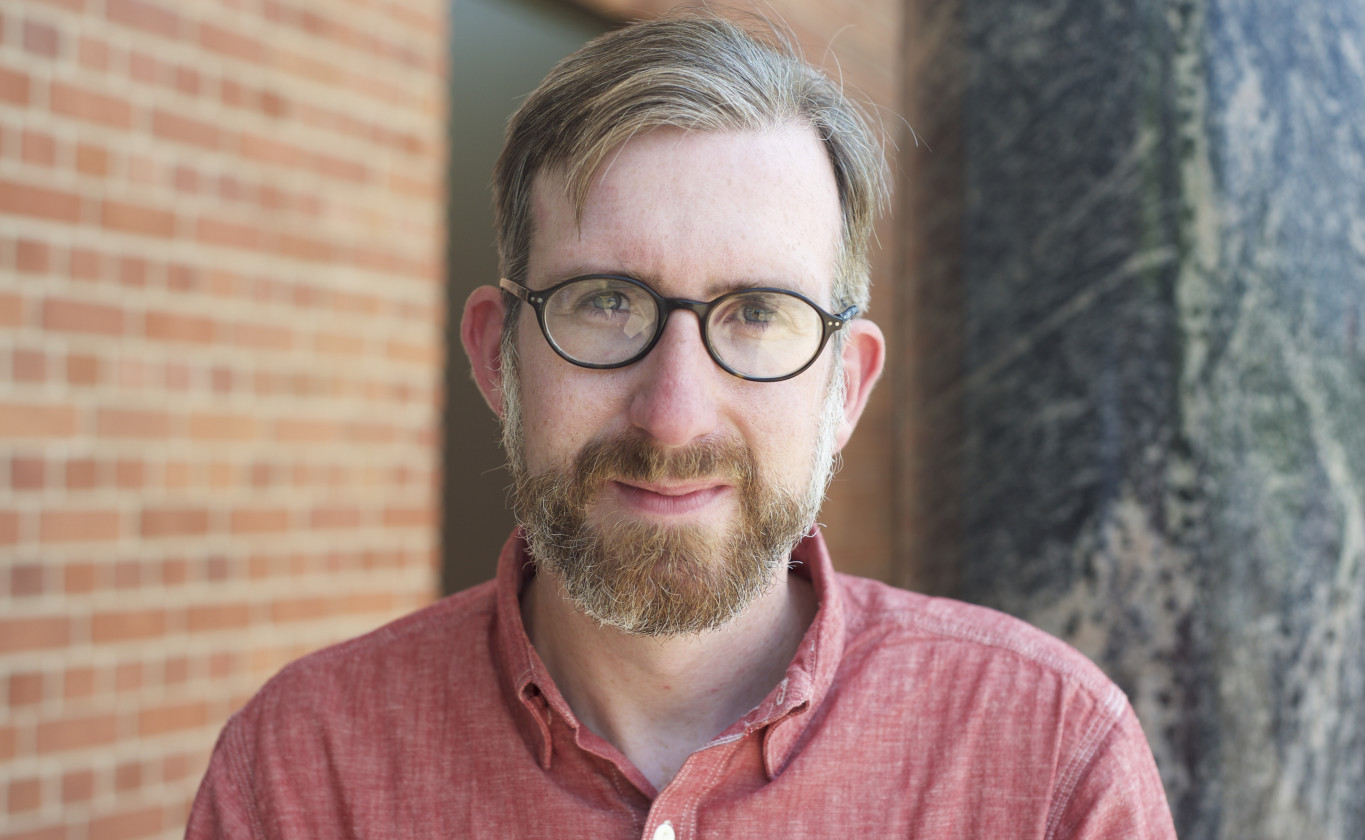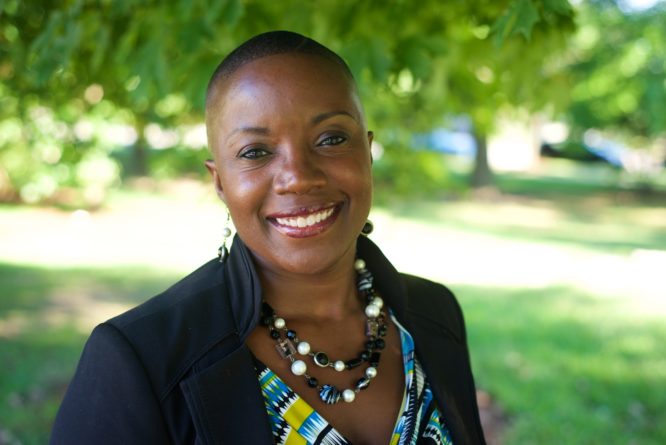If I have to think of one geographic signifier for racial division in St. Louis, it is the open lot: a front lawn, a vacant lawn, the setback of a new building, or the parking lot at a strip mall. We physically distance ourselves from each other. To me, that’s coterminous with our social distances. When I look at the highways and how much vacant land there is between downtown St. Louis and midtown St. Louis where Mill Creek Valley, a Black neighborhood stood, the open space is really a buffer that insulates and isolates us from each other. You find the same thing in other cities, but never on this scale.
I think the open space is really a buffer that insulates and isolates us from each other. You find the same thing in other cities, but never on this scale.
St. Louis has physical traces of racism and racial conflict that are so much more stark and so much more perpetual. I feel like other cities have come back and there’s a healthier appearance to places that were once contested. In St. Louis, we still haven’t filled in those empty spaces. We’re still not living next to each other again.
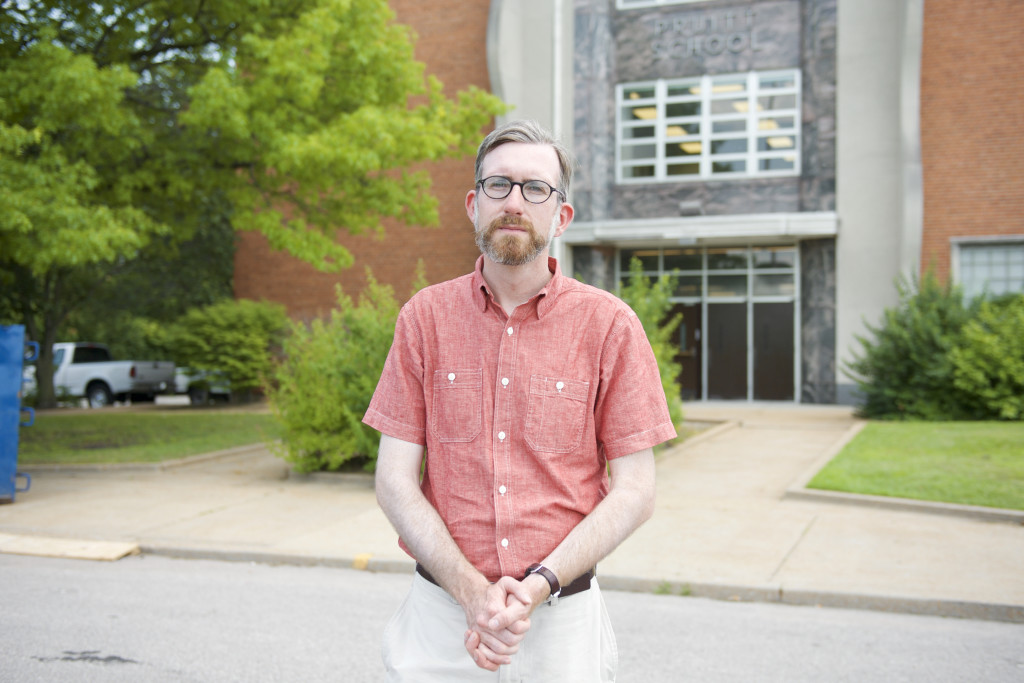
Michael Allen in front of the Pruitt School, photos by Lindy Drew
Between this building and that building, there’s a big lawn and trees and they have a fence and a gate. What message does that send to people who live here? This is like a standoff of sorts. But the manicure, the nature of the lawn, sort of cloaks that because it’s so pretty but banal at the same time. You might not even notice it. If you just drive through here, you wouldn’t even focus on this lawn. It just becomes scenery.
But, why is it here? Why is this building across the street from the church? The building here could be on the sidewalk across from the church. The building could be on the corner. The park could accent the church. Actually, there could be a feature that the front door of the church could line up with something on the other side of the street which would draw a connection between these two communities, and maybe people from the church would be curious enough to walk over here and vice versa.
There’s a lot going on here socially. We have this very successful reconstruction of public housing with a lot of stakeholder residents and senior citizens. They’re not leaving. They’re here to stay. And we have this Polish church, that’s persisted despite all the changes in the neighborhood, with a Heritage Center Museum and an annual Polish Festival. There’s diversity. In how many places in the country can you stand in the middle of the street and be surrounded by African American and Polish American culture in one spot?
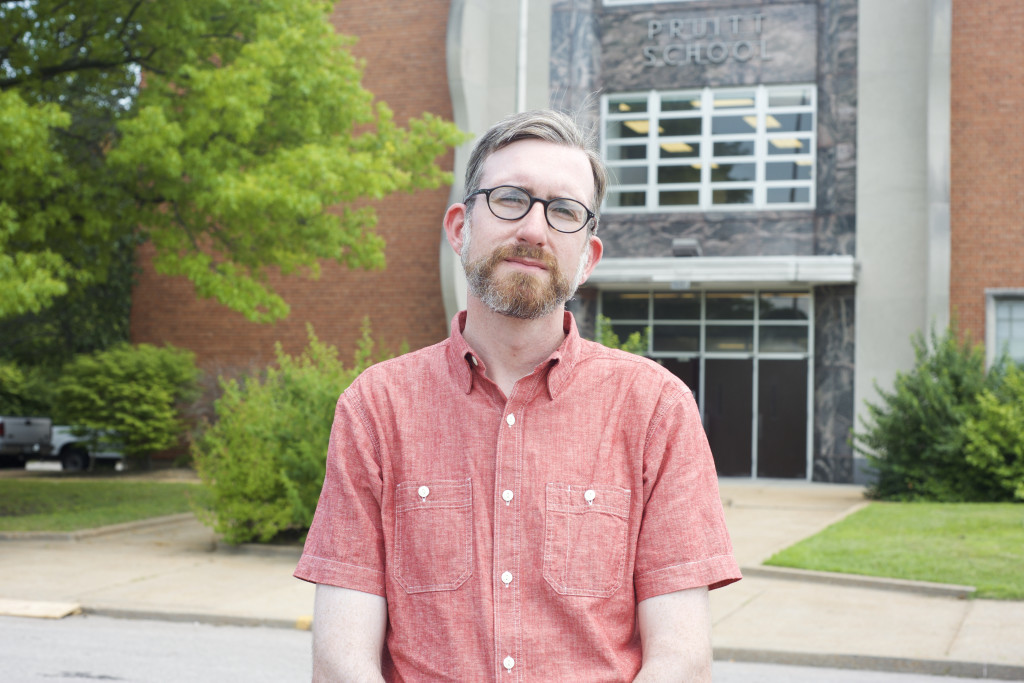
The Broken Window Theory really, to me, it’s a psychology — I almost would say psychosis — that conflates the physical decay of a place with cultural and moral decay. More to the point, in St. Louis, it’s looking at abandoned buildings or neglected buildings as unseemly and undesirable spaces, associating that with crime, and thus associating the residents who might live in a building that’s dilapidated or next door with this shameful or stigmatic mark of crime and criminality. It has its extremes. It has the stop-and-frisk incarnations where we’re going to police the hell out of a neighborhood to try to tame it when most residents are just living their lives and happen to be poor. On the other hand, it means — and St. Louis has done this — we’ll spend oodles of money tearing down vacant buildings or chasing people out of rental units. The best case is some developer gets the real estate. The worst case is nothing. It’s a nothingness.
The Broken Window Theory in St. Louis is part of this push to create openness, to tear things down, but it’s also this idea that the adjunct is anybody who’s within eyeshot of that abandoned building must be up to no good or part of the problem.
And that’s what we have on the north side — whole blocks where things have been torn down, buildings have been torn down in the name of the theory and this false claim that the cure for poverty and disinvestment is destruction and incarceration. It’s basically a containment strategy that avoids any critical reflection on the root political economics of urban America. Buildings don’t just up and become abandoned because the neighborhood is unworthy or shameful. People don’t live in substandard rental housing because they choose that, because that’s what they see as their ideal vision of their lives. The Broken Window Theory in St. Louis is part of this push to create openness, to tear things down, but it’s also this idea that the adjunct is anybody who’s within eyeshot of that abandoned building must be up to no good or part of the problem.
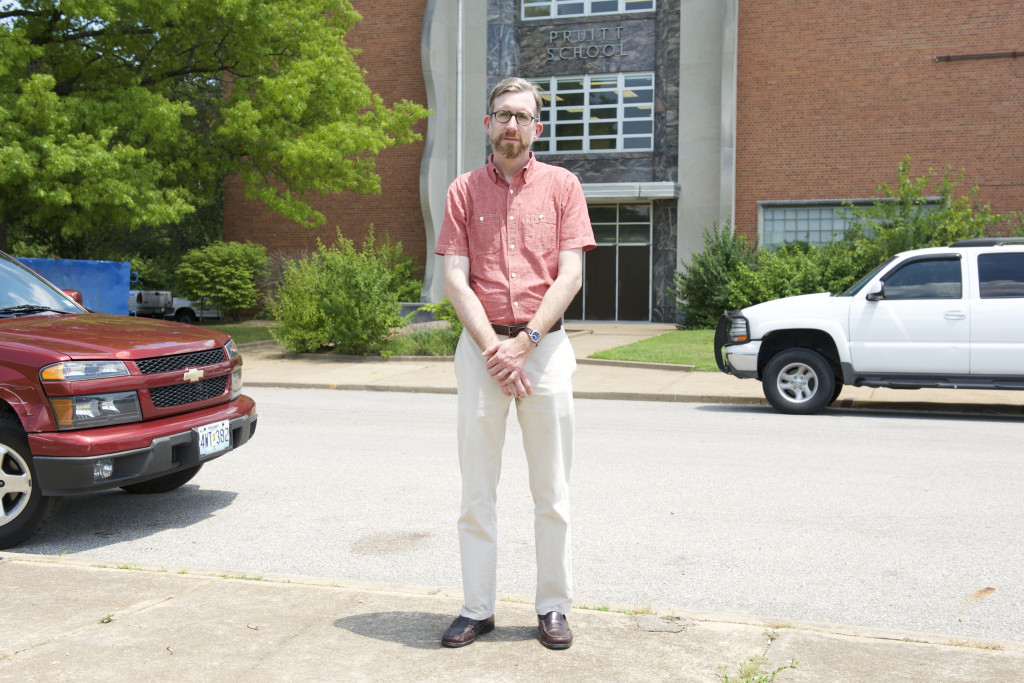
If you’re a liberal-minded St. Louisian, you can live in a racially and socially diverse neighborhood with like-minded people and probably also become somewhat oblivious to these chasms. Because, in some parts, there are pockets where you might actually think we live in a utopian version of St. Louis.
Most people I know still aren’t really thinking about these connections. I know people who still are only seeing the dialogue as a threat to their well-being, their projects, or their lifestyle. It’s just an annoyance. They see themselves as liberal, and they’re strict Democrats. They hate racism. They hate homophobia. They hate social divides. But they still say small but disparaging remarks about protests and all of this as if somehow the region has gotten over it. Again, that’s the insulation and isolation.
If you’re a liberal-minded St. Louisian, you can live in a racially and socially diverse neighborhood with like-minded people and probably also become somewhat oblivious to these chasms, because in some parts, there are pockets where you might actually think we live in a Utopian version of St. Louis. That is a form of insulation just the same as moving out to some parts and hanging out with all White middle-class people is silo-izing yourself. There’s a status quo and it hasn’t really been shaken too badly with everything.
Some people have actually probably had some revelations. But a lot of people are continuing the same old, same old or worse.
Thoughtful people are being more thoughtful. Some who were moderately thoughtful are being thoughtful. Some have actually probably had some revelations. But a lot of people are continuing the same old, same old or worse. A lot of walls have risen higher in affluent White St. Louis as a result of this. I think people are speaking very carefully, but I’d be curious to know what they say behind closed doors.
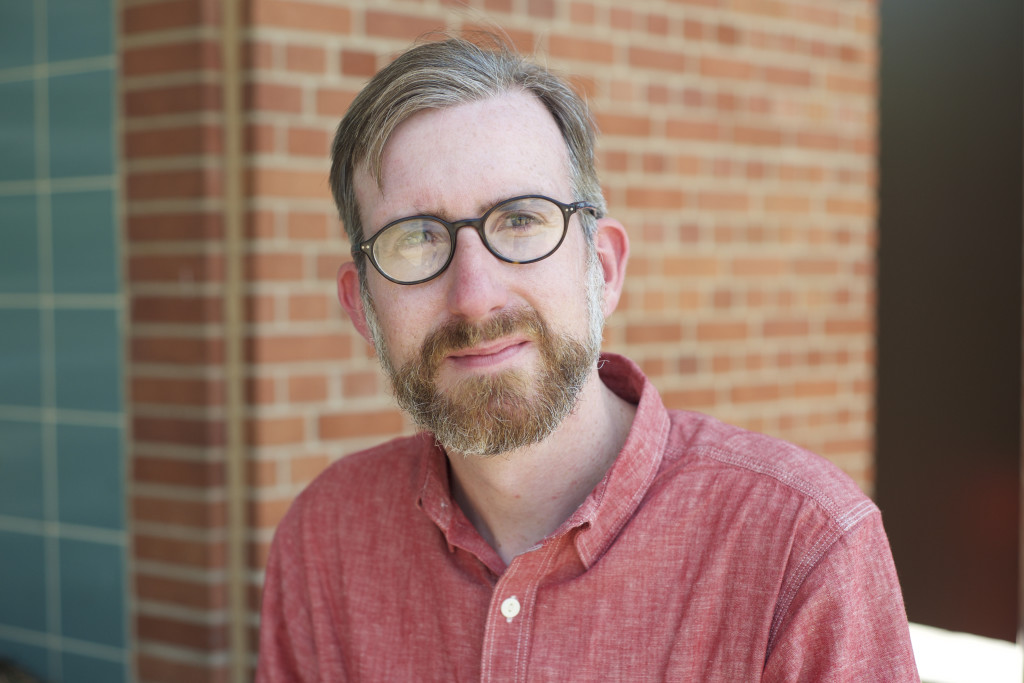
I care because I think that every St. Louisian makes St. Louis a great place to live and I don’t want to see my neighbors suffering. I don’t want to see my neighbors disenfranchised. I don’t want to see anybody hurt systemically in this city, in this region. It’s bad for everyone. It’s bad for me to live in a racially divided and socially divided region because it hurts all of our prosperity, it hurts our educational system, and it hurts our standing among American cities. You’d think there’d be other motivations for caring, like the fact that our region could plummet and lose standing because other regions who are working on these problems are growing faster, creating more jobs. Companies are making decisions on where to locate and persistent racial strife is not a top selling point of any region. We might be able to blind people in-house, but how can we blind the rest of the world to the problem?
I care because I think that every St. Louisian makes St. Louis a great place to live and I don’t want to see my neighbors suffering. I don’t want to see my neighbors disenfranchised. I don’t want to see anybody hurt systemically in this city, in this region. It’s bad for everyone.
You’d think at least the civic patriotism would trump any inability to identify with other people. I don’t really get North County, but I get St. Louis, right? I didn’t grow up in St. Louis City or County. I grew up in rural Illinois, so I don’t know where all the school district boundaries are in St. Louis County. I don’t know if you’re not supposed to go to certain areas or stick to certain parts. I moved to a big city because I want to be mobile and enjoy the benefits of having all this at hand. To me, you have to care because everybody in the region is everybody’s neighbor. End of story.
I chose to have my photo taken at the Pruitt-Igoe site because this is a cultural landscape that is the product of all the issues the Ferguson Commission is dealing with: issues of poverty, race, spatial segregation, and the inability to resolve the needs of poor and lower-middle-class residents. Pruitt-Igoe was a neighborhood cleared to build the housing project, which was a neighborhood that was cleared and never replaced. That’s why I wanted to go there because it’s the paradox of concealing these issues.
Our efforts to tidy up or drape the problems sometimes result in something even more glaring and more visibly different than a real conversation or an effort to change.
If we just let Pruitt-Igoe stand, it becomes a forest. It becomes invisible. Nobody really knows what Pruitt-Igoe was. A forest allows Pruitt-Igoe to be recuperated by the built environment. On the other hand, it’s a giant vacant lot that a lot of people would think is unsightly, going back to the whole Broken Window Theory. Our efforts to tidy up or drape the problems sometimes result in something even more glaring and more visibly different than a real conversation or an effort to change. Change would be hard and it might look a little ugly, but a vacant lot is even uglier. Change is just a moment. A lot of these spaces we create are perpetual.
There’s still beauty there. The school is reopening. It’s a gorgeous building. The church is here. There’s a community around the site. So, there’s a lot of potential even for that forest to become an asset again. I don’t think it will, metaphorically or physically, until all the issues contained on its ground buried there, so to speak, are unearthed and addressed.

